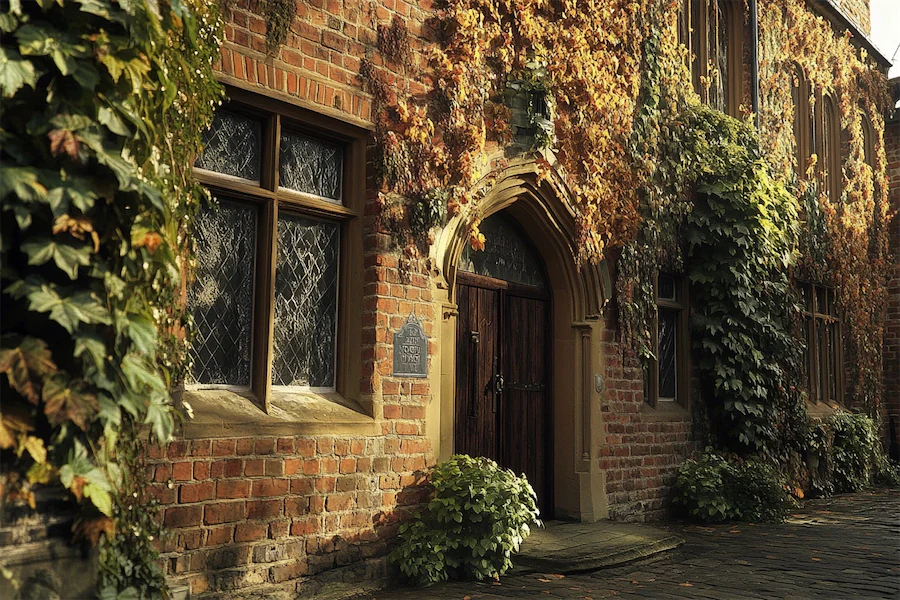Tudor architecture, which flourished in England from the late 15th to the early 17th centuries, is renowned for its distinctive wall constructions that blend medieval traditions with early Renaissance influences.
History and Origins of Tudor Walls
The Tudor period marked a transition in building practices. Earlier medieval structures predominantly utilized timber frames with wattle and daub infill. However, during the Tudor era, there was an increased use of brick and stone, reflecting the rising availability of these materials and a shift towards more permanent and fire-resistant constructions.
Key Features of Tudor Walls
Tudor walls exhibit several hallmark characteristics:
- Half-Timbering: This technique involves a wooden framework with spaces filled by materials like brick or plaster. The exposed timber beams create a striking contrast against the infill, resulting in the iconic black-and-white appearance.
- Brickwork: The use of brick became more prevalent, often arranged in decorative patterns. Bricks were sometimes used to fill the spaces between timber frames or to construct entire walls, showcasing the material’s versatility.
- Tudor Arch: A distinctive four-centered arch, known as the Tudor arch, was commonly employed in doorways and windows. This flattened arch provided a wide opening without occupying excessive vertical space.
Applications of Tudor Walls
Tudor wall constructions were utilized in various building types:
- Residential Homes: Many homes featured half-timbered walls, providing both structural support and aesthetic appeal. The timber framework was often left exposed, highlighting the craftsmanship.
- Manor Houses and Castles: Larger estates incorporated brick and stone walls, reflecting wealth and status. Decorative brickwork and stone detailing were common in these grand structures.
Considerations When Choosing Tudor Wall Features
When incorporating Tudor wall elements into modern designs, consider the following:
- Materials: Authentic materials like timber and brick can be costly and may require specialized craftsmanship. Alternative materials that mimic the appearance may offer cost-effective solutions.
- Maintenance: Exposed timber and brick require regular upkeep to prevent deterioration. Proper sealing and treatment are essential to maintain the structure’s integrity.
- Historical Accuracy: For restoration projects, it’s crucial to research and adhere to traditional construction methods to preserve historical authenticity.
Conclusion
Tudor wall constructions are a testament to the architectural innovation of the period, blending functionality with distinctive aesthetics. Whether through the iconic half-timbered designs or the decorative brickwork, these walls continue to inspire and influence architectural styles today.
